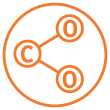Main material types littered
Key Finding
In 2018–19, plastic items replaced cigarette butts as the most common littered items in Queensland. However, cigarette butts continue to be a significant litter load in the environment, despite contributing a very small fraction to litter volume.
The National Litter Index provides estimates of litter by material type.
In 2018–19, the average number of litter items in Queensland was higher than their comparative Australian figures except for cigarettes (16 items) which was the same, and glass (0.6) which was slightly lower than the national average (0.8).
The 3 most common litter items — making up 86% of all littered items in Queensland are:
- plastic
- cigarette butts
- paper.
Plastic, paper and metal account for the highest volumes (excluding large items).
- Together, they account for about 93% of the volume of littered items.
- Plastic accounts for 45% of the total volume of material surveyed (excluding large items).
- Cigarettes make up less than 1% of the volume of litter.
Glass litter was slightly below the Australian average (both count and volume). The introduction of the Container Refund Scheme in Queensland may be an influence.
More information:
- Keep Australia Beautiful — National litter index
- Number of litter items in Queensland
- Number of litter items for different site types
Relevant Sustainable Development Goals’ targets
Download data from Queensland Government data
Metadata
Average number and volume of litter items per 1,000m2 by litter type and site type for Queensland and Australia, 2005–2006 to 2018–2019 (data from the National Litter Index).










